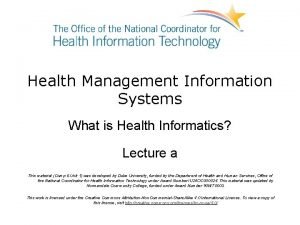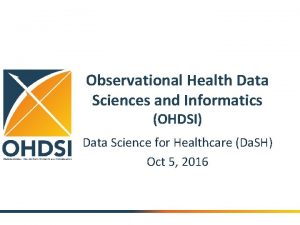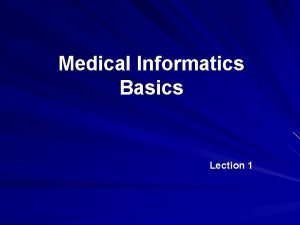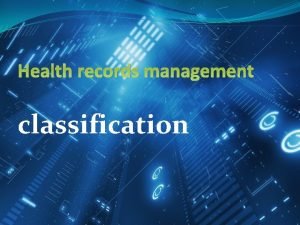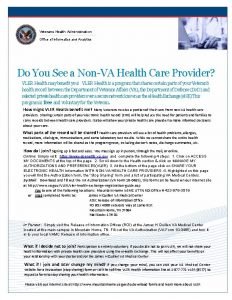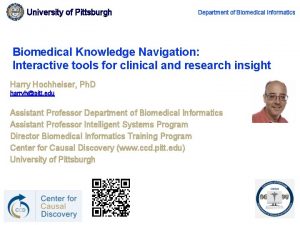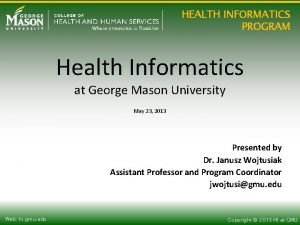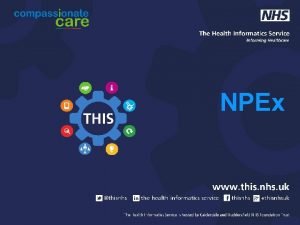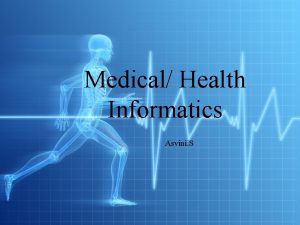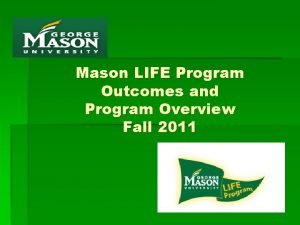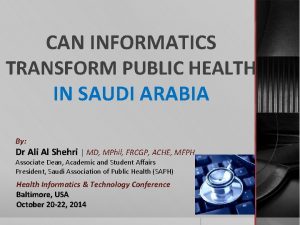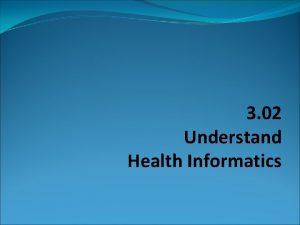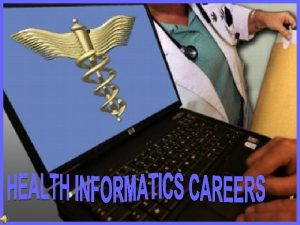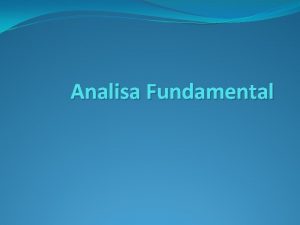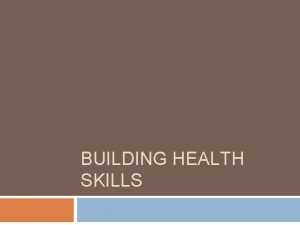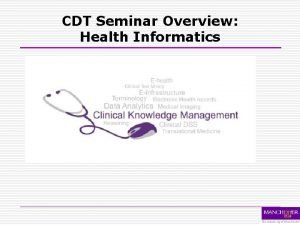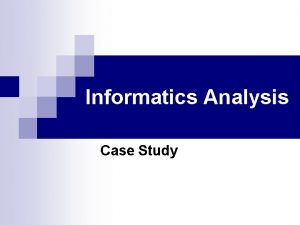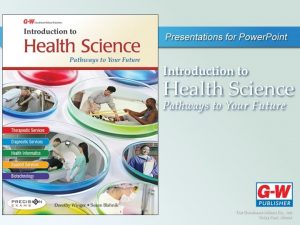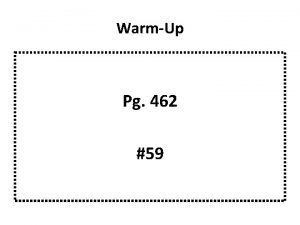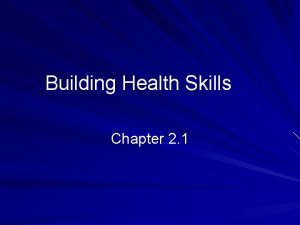Chapter 3 Fundamental Skills in Health Informatics WarmUp

























- Slides: 25


Chapter 3 Fundamental Skills in Health Informatics

Warm-Up • Have you ever felt confused or frustrated while communicating with a doctor, dentist, or other healthcare provider? • Have you or someone you know had a mix-up with a medical record or bill? • What can healthcare providers do to make sure they communicate effectively with patients? Alexander Raths/Shutterstock. com Copyright Goodheart-Willcox Co. , Inc. May not be posted to a publicly accessible website.

Communication • The act of sharing a message, thought, or idea so it is accurately received and understood • Healthcare communication follows many protocols, or rules and procedures The communication process is a loop that begins with a message and ends with feedback from the receiver. Copyright Goodheart-Willcox Co. , Inc. May not be posted to a publicly accessible website.

Critical Thinking Why is feedback so important for communication? • Feedback ensures that the person receiving the information has understood it correctly. • If there is no feedback, the sender doesn’t know if the message was understood or even received. • Feedback allows the receiver to ask questions to clarify information. Copyright Goodheart-Willcox Co. , Inc. May not be posted to a publicly accessible website.

Communication Skills • • Listening Speaking Reading Observing – Body language • Writing megaflopp/Shutterstock. com Copyright Goodheart-Willcox Co. , Inc. May not be posted to a publicly accessible website.

Think Further When might a patient’s body language tell more than his or her words? Example: If a patient says she’s feeling fine, her body language, such as clenched teeth and shallow breathing, may show that she is actually in pain. What body language can you use to show you care about a patient? • • Look at the patient Turn and lean slightly toward him or her Nod or say yes to acknowledge what the patient says Show a warm and open facial expression to encourage the patient to speak freely Copyright Goodheart-Willcox Co. , Inc. May not be posted to a publicly accessible website.

Communicating through the Medical Record • Medical record – also known as a patient’s chart or file – an important way for caregivers and staff to communicate, or share information about, a patient • Components of the medical record − − doctors’ evaluations treatment received changes in a patient’s health patient communication Condor 36/Shutterstock. com Copyright Goodheart-Willcox Co. , Inc. May not be posted to a publicly accessible website.

Critical Thinking What information is included in a patient’s medical record? • The patient’s chief complaint • Family and personal medical history • The results of a physical exam and the physician’s diagnosis, or medical impression • Progress notes documenting treatment • Narrative nurse’s notes describing symptoms • Reports (radiology, lab, and other test results; consultation reports; operative reports and discharge summaries) • Medications prescribed • Records of all communications with the patient • Forms, such as HIPAA privacy notice or living will Aleksandar Grozdanovski/Shutterstock. com Copyright Goodheart-Willcox Co. , Inc. May not be posted to a publicly accessible website.

SOAP Format for Progress Notes • A format for documenting patient visits Copyright Goodheart-Willcox Co. , Inc. May not be posted to a publicly accessible website.

Medical Documentation • Refers to the forms and notes added to a medical record when charting • Charting is the process of recording observations and information about patients • Different healthcare workers complete various aspects of charting • Guidelines for documentation Volt Collection/Shutterstock. com Copyright Goodheart-Willcox Co. , Inc. May not be posted to a publicly accessible website.

Communicating by Telephone • Telephone etiquette • Call screening • Triage – An evaluation process in which a group of patients is sorted according to the urgency of their need for care • Documenting phone conversations wavebreakmedia/Shutterstock. com Copyright Goodheart-Willcox Co. , Inc. May not be posted to a publicly accessible website.

Critical Thinking Which conditions are true emergencies that require immediate care? • Chest pain or any other severe pain • Difficulty breathing • Loss of consciousness • A fever above 102°F • Heavy bleeding • Severe vomiting or diarrhea Elena Elisseeva/Shutterstock. com Copyright Goodheart-Willcox Co. , Inc. May not be posted to a publicly accessible website.

Health Literacy • A person’s ability to obtain and understand healthrelated information and use it to make informed decisions – Includes reading level and speaking and listening ability • Healthcare workers should: – Assess a patient’s level of literacy and adapt communication accordingly – Learn cultural competency skills Robert B. Miller/Shutterstock. com Copyright Goodheart-Willcox Co. , Inc. May not be posted to a publicly accessible website.

Information Technology • Electronic Health Record (EHR) – A complete computerized record for a patient containing information from all his/her care providers • Continuity of Care Records (CCRs) – Can be accessed and updated by all physicians regardless of the computer record system • Personal Health Records (PHRs) – Allow patients to manage their own health, schedule appointments, review test results, and communicate with physicians electronically Rocketclips, Inc. /Shutterstock. com Copyright Goodheart-Willcox Co. , Inc. May not be posted to a publicly accessible website.

E-mails and Faxing • In healthcare, e-mail is becoming more common than paper mail – – E-mail is secure and encrypted Use only for business purposes Use formal language Be concise; stick to one subject per message • Fax machines send documents through a phone line – Cover sheet includes sender’s contact info, recipient name, date, total # of pages, and confidentiality statement Sean Locke Photography/Shutterstock. com Copyright Goodheart-Willcox Co. , Inc. May not be posted to a publicly accessible website.

Critical Thinking How can you protect patient privacy when using e -mail and fax machines? • A written release is required before sending patient information to another provider or insurance • Use blind copy (BCC) to send an e-mail to a large group of people whose e-mail addresses must be kept private • Always use a cover sheet for your faxes and wait until the machine has processed rather than leaving pages in the machine • Double-check e-mail addresses and fax numbers before sending information Copyright Goodheart-Willcox Co. , Inc. May not be posted to a publicly accessible website.

Understanding Numerical Data • Data – Facts about a specific topic that are used for reference or analysis • Statistics – A science that includes the collection, organization, and interpretation of numerical data • Mean, median, and mode Konstantin Chagin/Shutterstock. com Copyright Goodheart-Willcox Co. , Inc. May not be posted to a publicly accessible website.

Think Further Give the mean, median, and mode for this set of data and explain how you calculated each: 7, 14, 22, 23, 25, 26, 42, 87 • Mean: 32 (added up and divided by 9) • Median: 25 (found the number exactly in the middle when figures are in order) • Mode: 42 (number that is most frequently listed) Imagine these numbers refer to the ages of patients at your clinic. A coworker says the “average” patient at the clinic is in her early 30 s. Another coworker argues that most patients are 42. Explain why they are confused. • The mean refers to the statistical average, not the “average” as the word is commonly used. • The mode is the most frequently occurring number in a particular data set, but it does not represent most of the values in the set. Copyright Goodheart-Willcox Co. , Inc. May not be posted to a publicly accessible website.

Charts and Graphs • Display data visually, making it easier to comprehend, compare, and use • Five basic types − simple table (shows data in rows and columns) − line graph (shows changes over time) − bar graph (shows comparisons) − circle graph or pie chart (compares parts to a whole) − pictograph (represents data using images) • Steps for reading charts and graphs kotoffei/Shutterstock. com Copyright Goodheart-Willcox Co. , Inc. May not be posted to a publicly accessible website.

Reimbursement Tasks • Reimbursement means payment for services • Health informatics workers’ role in collecting reimbursement – Coding diagnoses and procedures – Completing insurance claim forms – Receiving and recording office payments – Making bank deposits Elena Elisseeva/Shutterstock. com Copyright Goodheart-Willcox Co. , Inc. May not be posted to a publicly accessible website.

Coding • Purposes of coding – – Reimbursement Research Public health Patient care • Two systems for coding: – International Classification of Diseases (ICD) – Physician’s Current Procedural Terminology (CPT) angellodeco/Shutterstock. com Copyright Goodheart-Willcox Co. , Inc. May not be posted to a publicly accessible website.

Critical Thinking What can happen if a patient’s medical chart is not coded properly? • The provider may not be reimbursed at the correct rate. • The patient may be overcharged/undercharged. • Errors in records can also affect research, public health, and patient care. How can a healthcare worker help ensure the codes are correct? • Double check all codes by referring to the latest edition of the ICD and CPT rather than relying on memory, and ask a physician to clarify as needed. Copyright Goodheart-Willcox Co. , Inc. May not be posted to a publicly accessible website.

Claims Process • Procedures for submitting costs for medical services so that payment can be collected or denial can be determined • Assignment of benefits: adult patients sign a claim form, granting permission to release their medical information to the insurance company • Explanation of benefits (EOB): shows what the insurance company is paying for, what it isn’t paying for, and why Keith Bell/Shutterstock. com Copyright Goodheart-Willcox Co. , Inc. May not be posted to a publicly accessible website.

Receiving Payments • The provider bills the patient for any charges not covered by insurance • Copayments, or copays, are paid at the time of service • Collect copays by cash, check, or credit or debit card and provide a receipt ©i. Stock. com/lisafx Copyright Goodheart-Willcox Co. , Inc. May not be posted to a publicly accessible website.
 Career skills in health informatics chapter 2
Career skills in health informatics chapter 2 Fundamental theorem of informatics
Fundamental theorem of informatics Observational health data sciences and informatics
Observational health data sciences and informatics Health informatics questions
Health informatics questions Health informatics
Health informatics Va office of health informatics
Va office of health informatics Pitt health informatics
Pitt health informatics Gmu health informatics
Gmu health informatics Health informatics courses uk
Health informatics courses uk Health informatics career framework
Health informatics career framework Npex lims
Npex lims Health informatics ryerson
Health informatics ryerson George mason life program
George mason life program Health informatics in saudi arabia
Health informatics in saudi arabia Warmup ratio
Warmup ratio Warmup 65
Warmup 65 Gmass warmup
Gmass warmup Status vs class
Status vs class Pyramid warmup
Pyramid warmup Pop thats their warmup
Pop thats their warmup Do you add exponents when multiplying
Do you add exponents when multiplying Java warmup
Java warmup Define:warmup
Define:warmup Pathos story
Pathos story Tinman running calculator
Tinman running calculator 65 mins
65 mins

